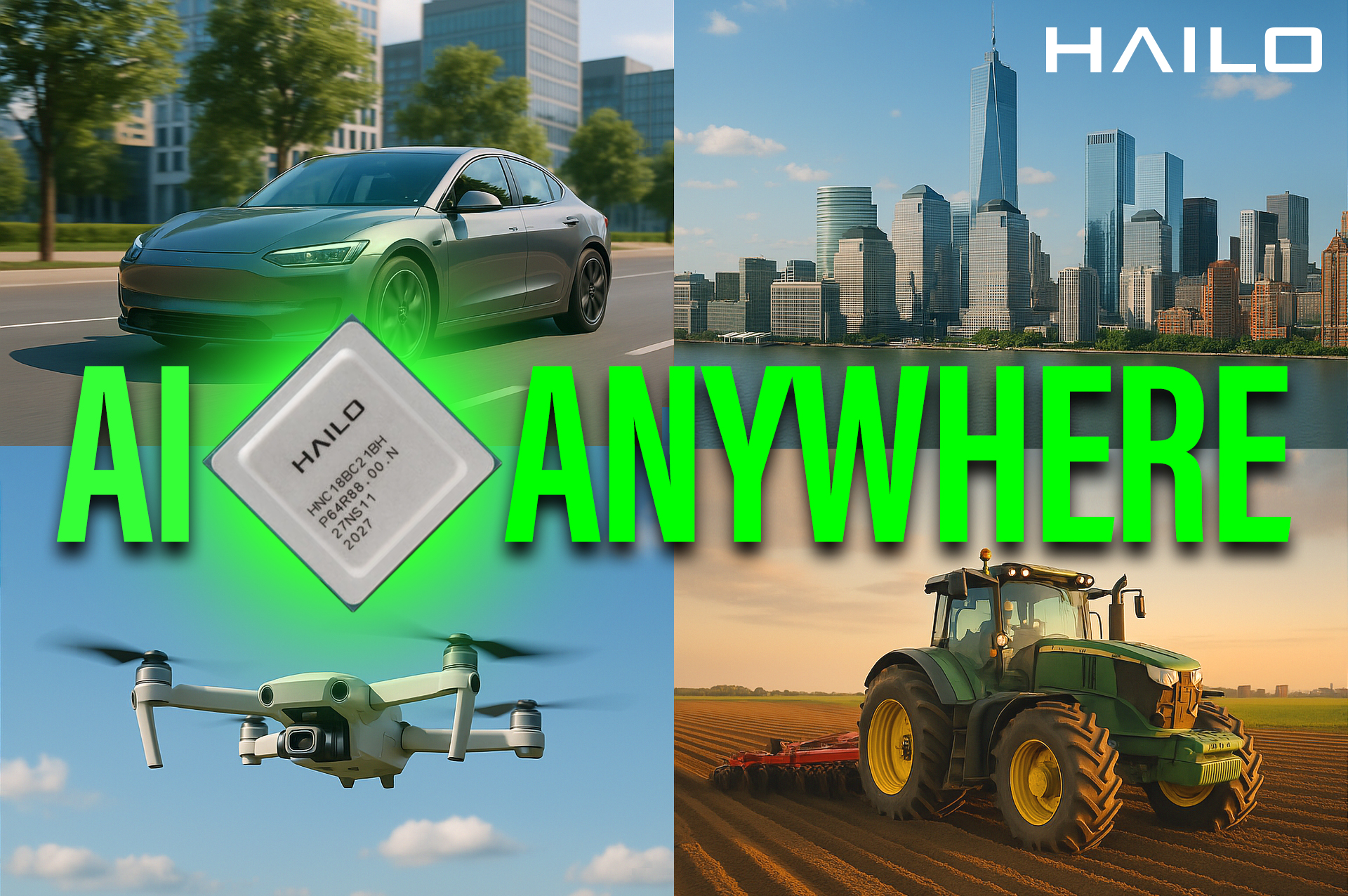Products
Solutions
Published
9 May 2025
Written by Emily Curryer
Whether you’re building next-gen robotics, smart cameras, or edge intelligence for agriculture, Hailo’s AI edge processors for smart devices offer powerful neural compute where you need it most—right at the edge.
At Embedded World 2025, we caught up with Nadav from Hailo who gave us an overview of how their technology isn’t just powerful—it’s practical, scalable, and already changing the way designers approach embedded AI.
What is Hailo? Edge AI Muscle with a Global Mindset
Based in Tel Aviv but with a footprint that spans the globe, Hailo is laser-focused on bringing high-performance neural processing to edge devices. Whether it’s a self-driving car, a smart surveillance system, or an IoT node in a low-bandwidth rural deployment, Hailo’s silicon handles the heavy lifting locally—keeping latency low, privacy intact, and cloud bills non-existent.
Their portfolio currently centres on two product lines:
- Hailo-8 AI Processor – a plug-and-play neural engine that pairs with virtually any host processor (think Raspberry Pi, i.MX, Intel, AMD, or even FPGAs).
- Hailo VPU – the beating heart of a smart camera, handling everything from image processing to AI inference, so you only have to worry about your application logic.
Ready to Deploy: Flexibility in Every Form Factor
One of the most common questions Hailo gets? “How can I get one of these to my bench—yesterday?” Thankfully, Hailo makes it easy. From Raspberry Pi hats to M.2 form factors, and even the raw chips for chip-down designs, there’s an option for every engineering need and project scale.
And with partners like EBV and SolidRun, getting your hands on development hardware is as straightforward as ordering a Pi.
Dev-Friendly by Design
Before your evaluation board even arrives, you can start tinkering. Hailo’s open software stack lives on GitHub and includes model examples, dev tools, and runtime environments. That means you can begin shaping your edge AI architecture right away—no mystery boxes, no black boxes.
The best part? It’s not just built for machine vision. Nadav showed off a demo by Dutch firm Perceive AI, using Hailo’s hardware to process radar perception data in real time. The takeaway? This isn’t just smart hardware—it’s adaptable to nearly any edge sensor scenario.
Edge AI for Real-World Challenges
Hailo’s processors are built for environments where bandwidth is scarce and privacy is non-negotiable. From smart cities to autonomous agriculture, AI edge processors for smart devices are no longer a niche—they’re a necessity.
So if your design brief includes phrases like “low latency,” “on-device inference,” or “cloudless compute,” Hailo is absolutely worth a look.
Comments are closed.

Comments
No comments yet